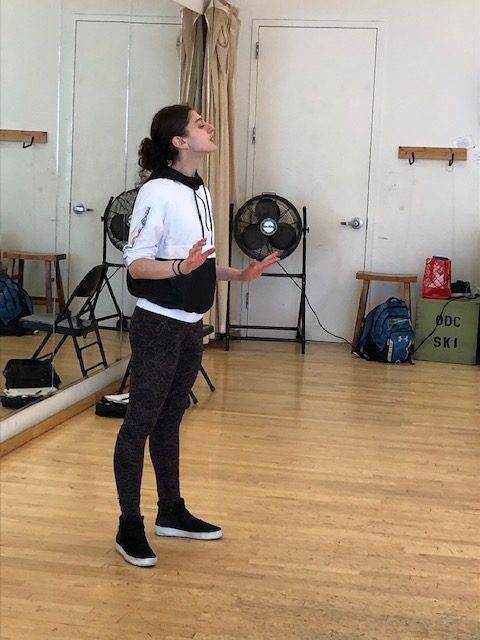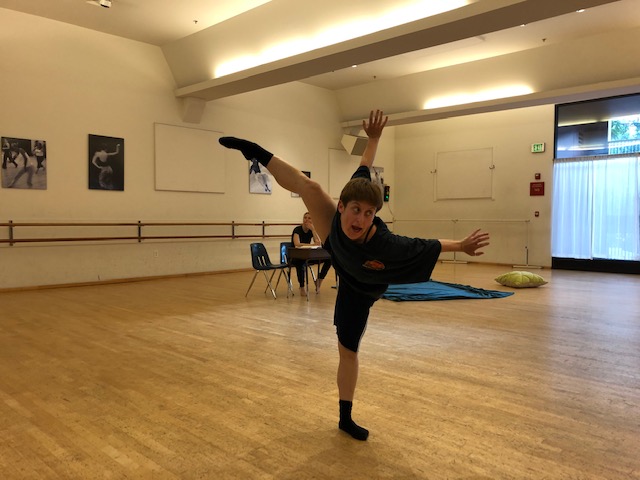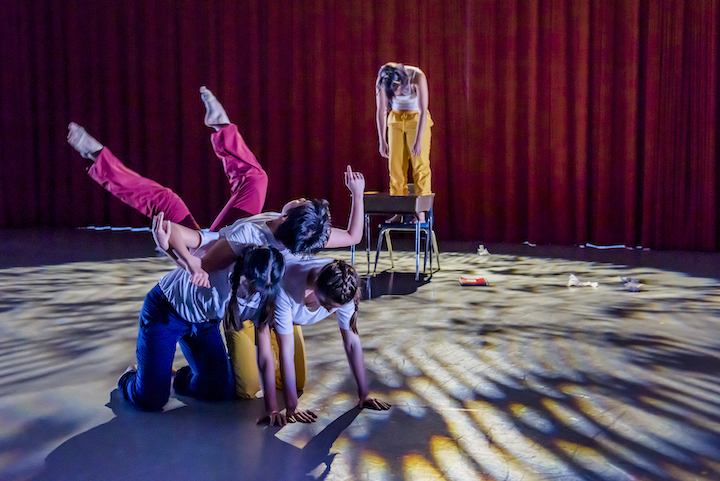
It’s back-to-school season for the kids, and no better time for San Francisco choreographer Alyssa Mitchel to present the question, “How do we learn?” in her one-hour dance work, The Classroom, which premieres September 7th and 8th in San Francisco at ODC’s Studio B. Each of the work’s sections, with irresistible titles like “Frustration,” “Defining Intelligence” and “Growth Mindset” examines a particular element of the learning process. Last week, on a breezy, sunny San Francisco afternoon, I met with Alyssa before rehearsal to chat.
She’s young and adorable, her long hair pulled back, clearly a gifted dancer as well as choreographer. I asked her what compelled her to create this specific work. “In third grade I was diagnosed with ADHD and other learning differences,” she shared. “Despite great support from my parents, teachers, and from many of my peers, I was often frustrated and horribly disappointed with myself. Everything was harder for me to learn and sometimes that felt very unfair.”
I could well appreciate this; my son struggles with learning differences, and no time was tougher than his adolescent years. He negotiated bump after bump, tutors and specialists, until finally he began to understand his own learning process.
“Luckily, my parents sent me to schools that valued the arts,” Alyssa added. “They also found some great extracurricular activities for me, including—of course—dance!”
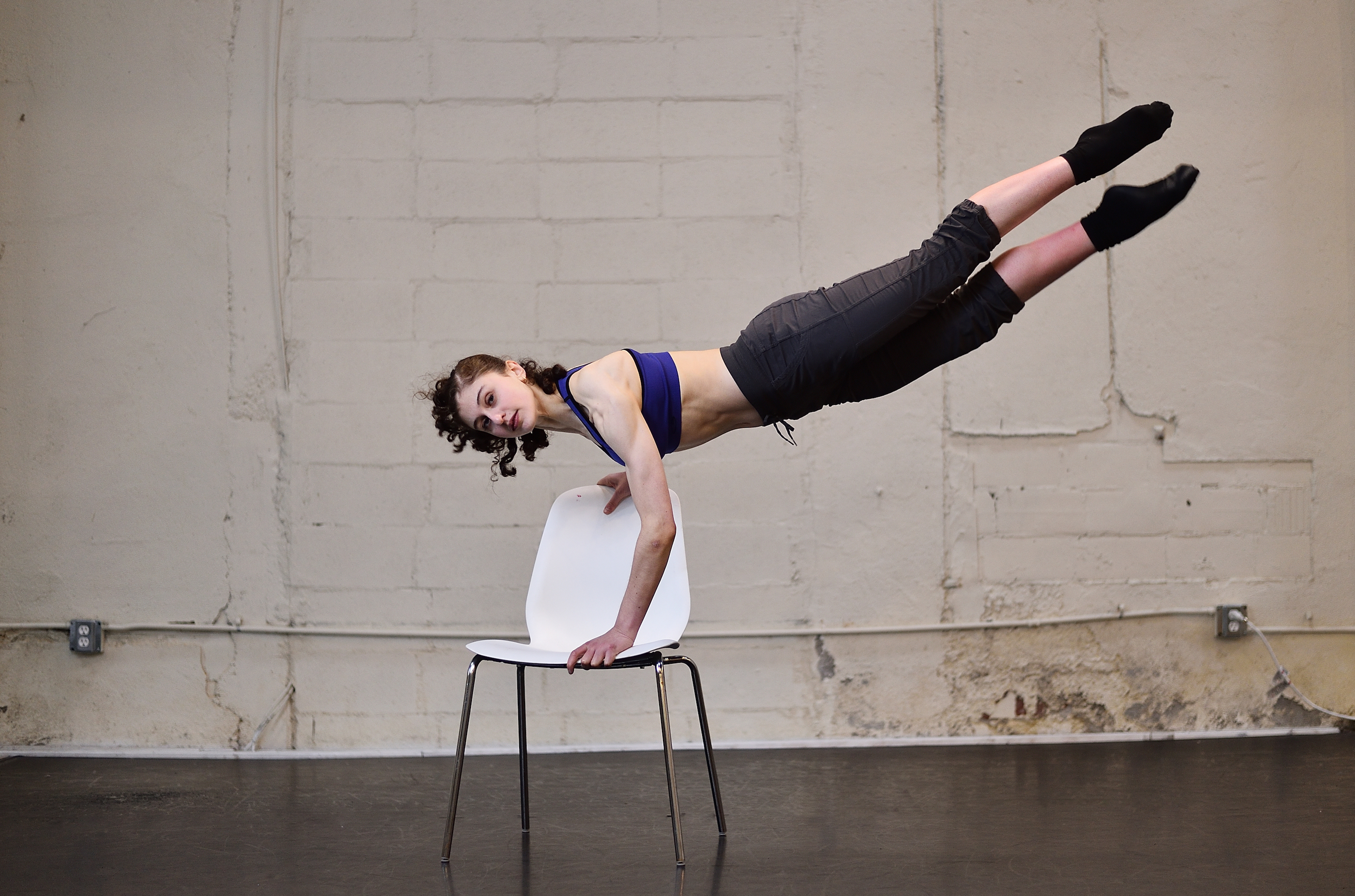
She succeeded brilliantly in both. The recipient of a Trustee Merit Scholarship, Alyssa earned a B.A. in Liberal Studies/Teacher Preparation with a minor in mathematics from the Dominican University of California, graduating Summa Cum Laude with Honors. She’s also a graduate of the career-bound program at Marin Dance Theatre. Since then, she’s worked with hundreds of students—elementary through college-age, with and without learning differences—as a math and organizational skills tutor. She helps students thrive by identifying the skills, strategies and methods that serve them best.
I inquired about the process of creating The Classroom.
“In April 2018, I began a choreographic residency with LEVYdance, where I felt compelled to create a work that bridged my twin passions—dance and teaching,” she said. “As it took shape, the piece began to feel, in part, like a celebration of my persistence as a dancer and as a learner. That persistence enabled me to reach adulthood feeling like a full person, rather than just a kid with learning differences who likes to dance.”
Following Alyssa’s residency at LEVYdance, she continued her exploration of the learning process, incorporating concepts from Dr. Carol Dweck’s “Growth Mindset” philosophy, as she interviewed over two dozen students, teachers and professors. “Through this, my vision for the work evolved,” she said. “I decided to integrate the interview responses into new sections of the piece.” The integration is multi-faceted; Alyssa has utilized recordings of the reflections of four high school students from the Urban School of San Francisco, in their own voices, to accompany solo dances within her work.
By now, it’s almost rehearsal time, so we head across the streets to the ODC Commons, specifically, the Jack H. Skirball Dance Studio. Portrait-sized framed photos line the cream walls above the barre. A floor-to-ceiling mirror fills one wall. The hanging portraits feature dancers in movement, arms flung out, bodies unfurling, expressing. A desk and two chairs sit upstage center.
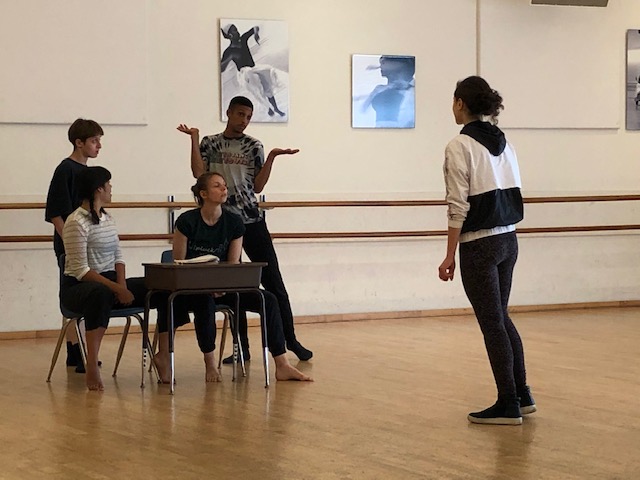
Today the dancers, four from the cast of seven, will be rehearsing a section entitled, “The Tutor.” Dancers Nicole Maimon and Katherine Neumann portray tutor and student, respectively. Frankie Lee III and Jessica Bozzo are the hovering parents. The dancers, like Alyssa, all have a classical foundation, from which they spread themselves out through the contemporary movement. It’s a pleasing combination of classical meets self-expression.
Once everyone is warmed up, Alyssa and the dancers discuss the movements, their nuances and intention. The music (here it’s the gorgeous “Without Sinking” by Hildur Gudnadottir) doesn’t cue them so much as the counting. There is a security in counts of eight, and I wonder if non-dancers feel its safe confines as well. As they dance, sharp angular movements are followed by luxurious, full arms that fill the space, the moment.
The dancers share an easy familiarity. Katherine, as “the student,” frequently has her hands balled into fists. She’s struggling outside her character, too—she’s jet-lagged from a transatlantic flight, a European dance residency, and she picked up a bug on the flight home. But a dancer doesn’t call in sick. Like most things dance, it involves pushing past discomfort, pain and the body’s unwillingness. From the others, she gets support and sympathy. They’ve all been there too.
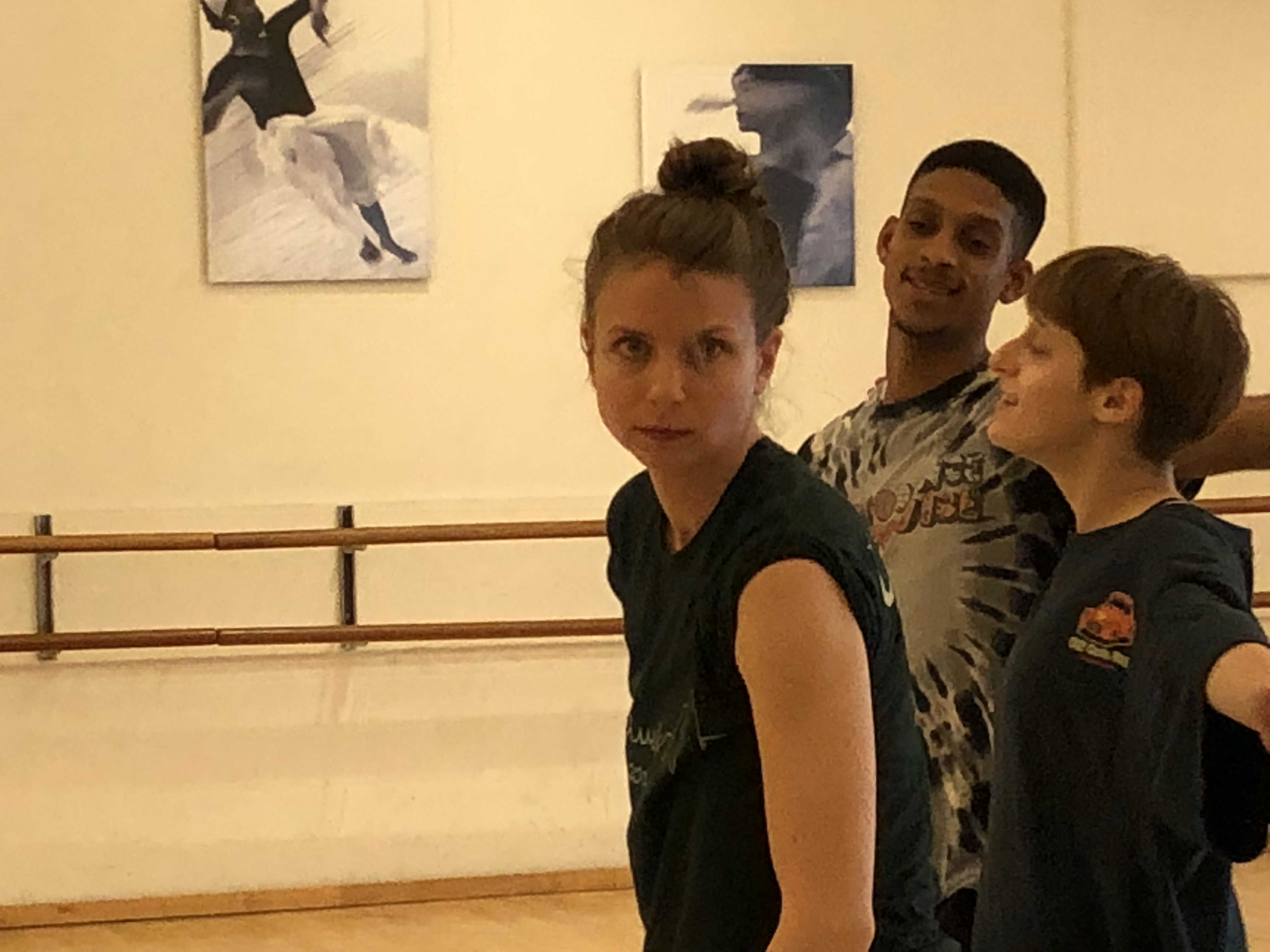
Frankie and Jessica, as the parents, share great synergy in their lifts and movements. Jessica has a hip-hop background, evidenced by the delicious disconnected, yet liquid, flow of her movements. Frankie’s long limbs and elegant lines serve him well, as he executes a gorgeous back attitude promenade.
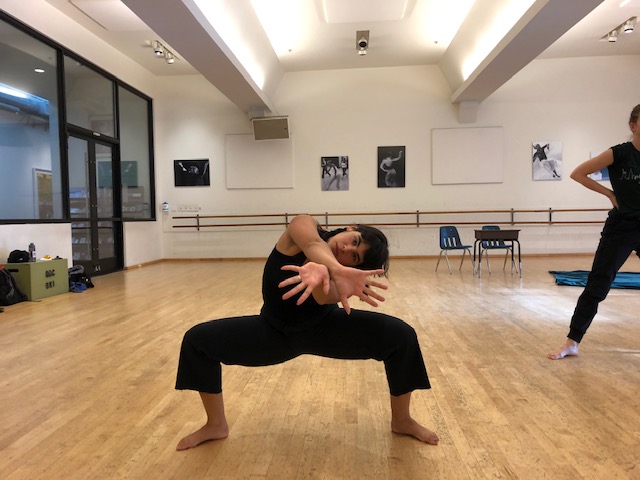
Nicole’s a beautiful dancer, with articulated phrasing that stretches out into the next movement. In an échappé the dancers execute in unison that starts and ends in second position, Nicole’s feet come together in a beat, clean and strong. “Now have your head down during that,” Alyssa calls out to the group, and it’s an intriguing contemporary touch. I’m irresistibly drawn to another contemporary gesture: a hip-hop-esque slump of the body, one shoulder gets thrown back as the other arm goes out and seems to cradle an invisible basketball (or books?). The head cocks to one side as the dancer shuffles three steps forward. Nicole starts it in her solo, and it gets repeated through the section, finally as an ensemble movement. It’s original and delightful, as is the moment when all four dancers tilt, stage left, at the same time.
Throughout, Alyssa watches, engages, offers feedback. She’s a dynamo, full of energy and vitality. She looks one moment like a student, a young dancer (which she still is, actually), and the next, a seasoned choreographer. She’s got a clear image of what she wants from the dancers, from the work itself, and she coaxes it out of them.
Alyssa is the 2019 fourth-quarter recipient of the Classical Girl Giving program for this project. How could I resist? Learning is inherent to the human condition. We all devote years to learning, but we all learn differently. For many—myself and my son included—the formative years of learning are fraught with pressure, insecurity, even trauma. To explore, through classical-based contemporary dance, the very human challenges of the learning process is something I’m thrilled to support.
I asked Alyssa what she hoped people would take home with them after watching the performance. “I hope the piece will prompt audience members to reflect upon their own struggles,” she said, “and to appreciate the fact that the only way to manage those struggles is to grow. Learning is a lifelong journey.”
A bendy, twisty, creative, hazardous, marvelously unique journey.
The Classroom runs September 7-8 at ODC’s Studio B* with shows at 8:00pm on Saturday, September 7 and 6:00pm on Sunday, September 8. Tickets are $20 and may be purchased online via ODC HERE.
Other dancers in the one-hour production include Jessica DeFranco, Sierra Heller and Tayler Kinner. Lighting design by Daniel Weiermann, original music for “Frustration” by Chicago-based jazz composer Jake Fisher.
*ODC Dance Commons Studio B
351 Shotwell Street
San Francisco, CA 94110
